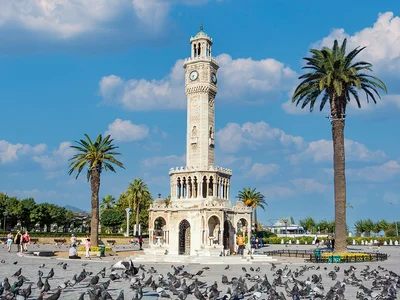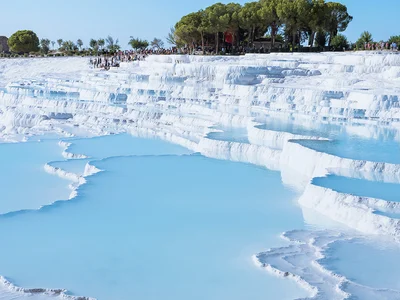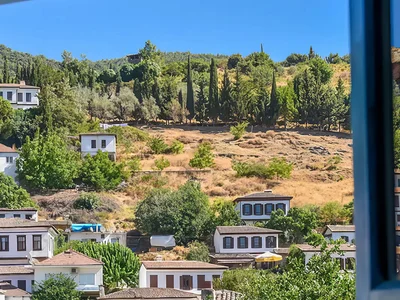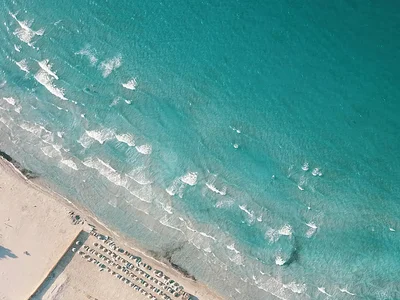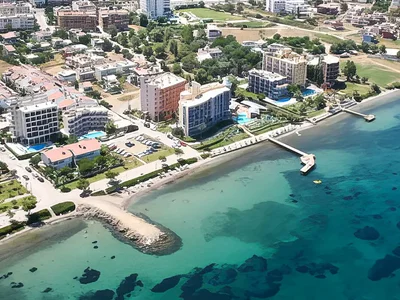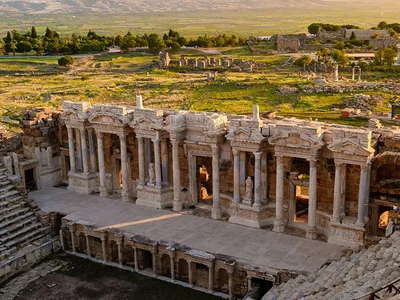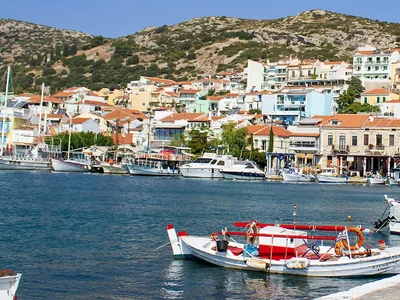Pamukkale: The Cotton Castle
Nestled in the southwest of Turkey lies a natural wonder that seems plucked from the realms of fantasy: Pamukkale, meaning "Cotton Castle" in Turkish. This enchanting destination boasts cascading terraces of milky white travertine, resembling a winter wonderland carved by Mother Nature herself. Pamukkale's surreal landscape is the result of calcium-rich thermal waters that have flowed down the mountainside for millennia, leaving behind a breathtaking tableau of shimmering pools and terraces.
Visitors to Pamukkale are greeted by the sight of gleaming white terraces that seemingly defy gravity as they cascade down the hillside. These terraces, formed over thousands of years by the mineral-rich waters of the region's thermal springs, have created a series of natural pools that beckon travelers to immerse themselves in the rejuvenating waters. As the sunlight dances upon the terraces, they take on a surreal, ethereal glow, casting a spellbinding spell over all who behold them.
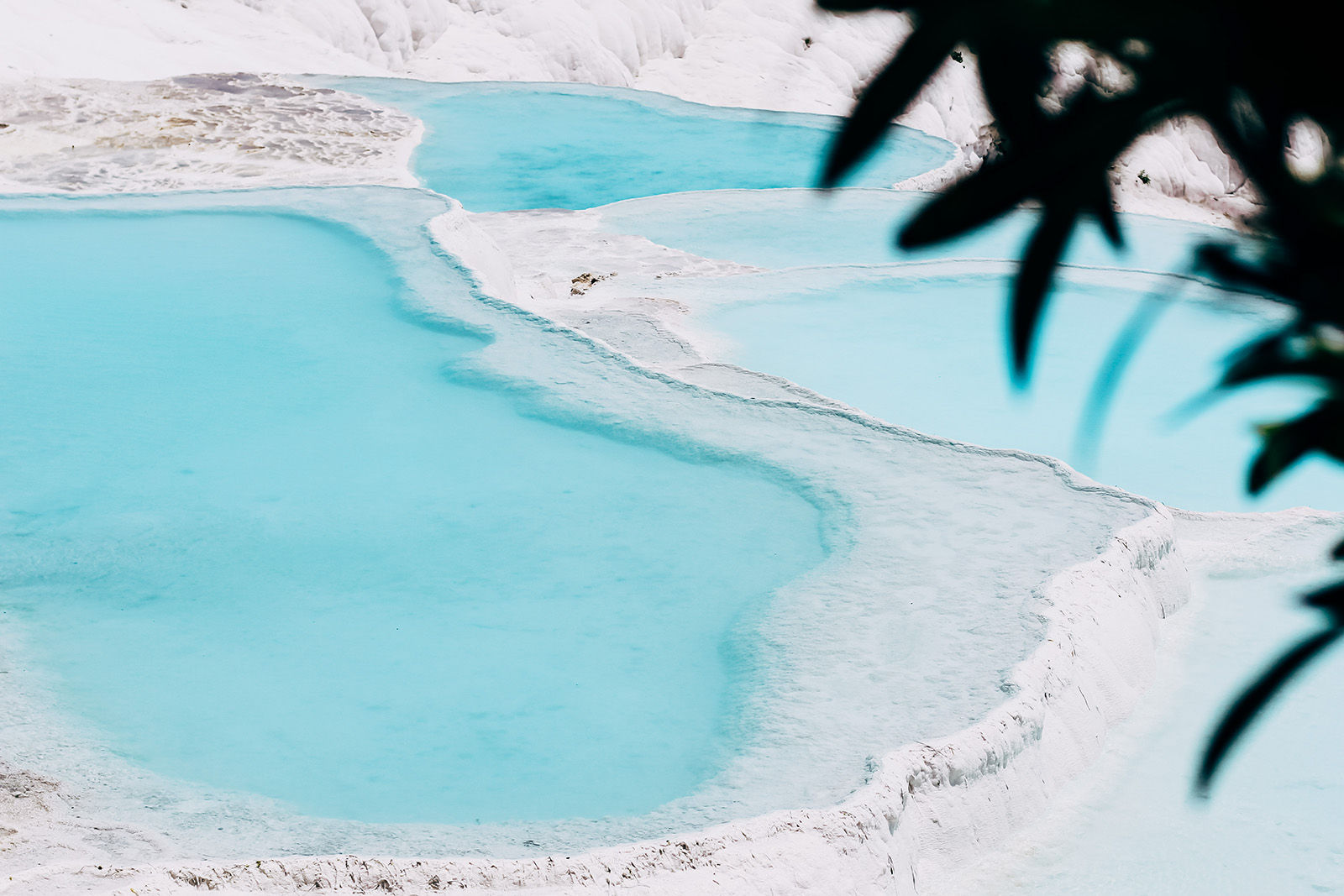
But Pamukkale offers more than just its iconic terraces. Nearby, the ancient city of Hierapolis awaits exploration, with its well-preserved ruins offering a glimpse into the past. Wander among the remains of ancient temples, theaters, and bathhouses, and marvel at the intricate mosaics that adorn the streets. At the Hierapolis Archaeology Museum, delve deeper into the region's rich history with a collection of artifacts dating back thousands of years. And don't forget to visit the sacred pool, where warm thermal waters bubble up from below, inviting visitors to take a dip and experience the healing properties of Pamukkale's legendary waters.

In addition to its natural and historical attractions, Pamukkale offers a range of outdoor activities for adventurers of all ages. Hike along scenic trails that wind through the surrounding countryside, offering panoramic views of the terraces below. For those seeking an adrenaline rush, paragliding and hot air balloon rides provide a bird's-eye view of this otherworldly landscape. And after a day of exploration, indulge in the region's culinary delights, with traditional Turkish dishes served in charming local restaurants.
With its unique blend of natural beauty, history, and adventure, Pamukkale offers a truly unforgettable experience for travelers seeking to immerse themselves in the wonders of Turkey's Aegean region.

